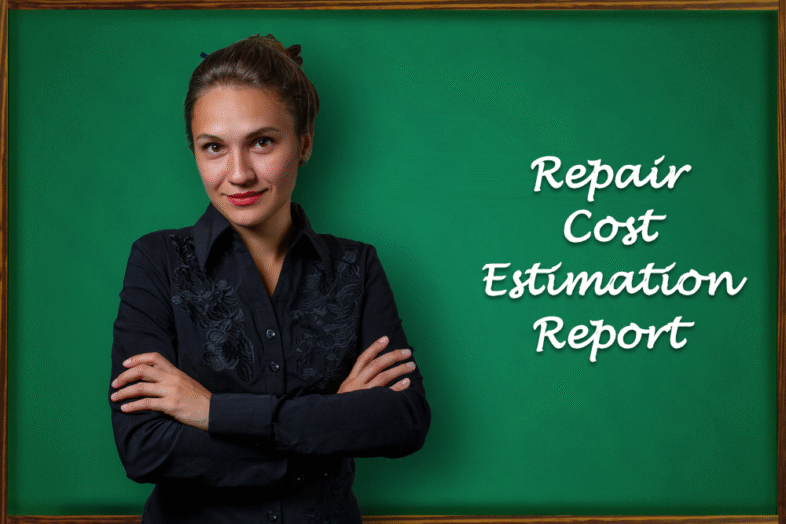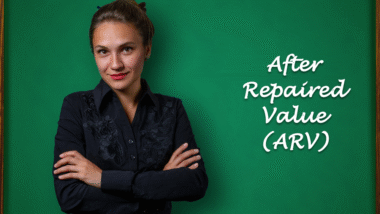An accurate repair cost estimate is the cornerstone of profitable real estate investing. It directly determines your maximum allowable offer, your financing needs, and your ultimate profit margin. This guide provides a structured approach to creating a report, from a initial “back-of-the-napkin” budget to a detailed inspection-based estimate for your final offer.
-
The Three-Tiered Estimation Approach
Your methodology should evolve as you move from property identification to an accepted offer.
| Tier | Purpose | Methodology | Ideal For |
| 1. Rapid Budgeting | Initial Deal Screening | Use rules of thumb based on purchase price or square footage. | Quickly evaluating dozens of properties in a portfolio or on the MLS. |
| 2. Scope-Based Estimation | Preliminary Offer & Walk-Through | A visual, high-level assessment of major repairs needed, creating a “Scope of Work.” | Formulating a strong initial offer before a detailed inspection. |
| 3. Detailed Line-Item Estimation | Final Deal Analysis & Funding | A comprehensive, room-by-room inspection resulting in a line-item budget with quoted costs. | Securing hard money loans, finalizing your rehab budget, and contractor bidding. |
- Methodology & Initial Budgeting
- Rapid Budgeting (The 1% Rule & Square Footage Method)
For instant screening, use these two common methods in tandem:
- The 1-2% Rule: Estimate total repair costs at 1% to 2% of the property’s purchase price. This is a very rough gauge but useful for a 30-second assessment.
- *Example: A $150,000 property might need $1,500 – $3,000 in repairs.*
- The Square Footage Method: Budget between $20 – $75 per square foot, depending on condition.
- *Light Cosmetic: $20 – $30/sq. ft. (paint, carpet, minor updates)*
- *Moderate Rehab: $30 – $50/sq. ft. (kitchen/bath updates, new flooring)*
- *Full Gut Rehab: $50 – $75+/sq. ft. (new systems, structural work, high-end finishes)*
-
Scope-Based Estimation (The Walk-Through)
During your first physical visit, create a high-level “Scope of Work.” Use the following categories to mentally catalog needed repairs:
- Exterior: Roof, Siding, Paint, Windows, Landscaping, Foundation.
- Interior Systems: HVAC, Electrical, Plumbing, Water Heater.
- Interior Cosmetic: Flooring, Paint, Kitchen, Bathrooms, Lighting, Doors/Trim.
-
Detailed Line-Item Estimation (The 3-Quotes Rule)
This is the non-negotiable step for serious investors. You will create a detailed worksheet, often using a repair estimation template or software. Crucially, you should obtain at least three contractor quotes for major items to validate your numbers.
III. Defining the Scope of Work & Quality by Exit Strategy
The quality and extent of repairs are dictated by your end goal. A detailed Scope of Work prevents “scope creep” and aligns your team.
| Exit Strategy | Repair Goal | Quality & Material Standards | Sample Scope of Work Focus |
| Wholesaling | Minimize cash outlay; sell “as-is” or with minimal clean-up. | “Band-Aid” Fixes Only. Secure, safe, and clean. No aesthetic upgrades. | Trash-out, lock change, minor roof patching, basic cleaning. |
| Retailing (Flip) | Maximize aesthetic appeal and perceived value for the end-homebuyer. | Retail-Grade. Trendy finishes (e.g., quartz counters, modern fixtures, luxury vinyl plank). Everything must look new and move-in ready. | Full cosmetic overhaul, modern kitchen/bath, new flooring throughout, professional landscaping, fresh interior/exterior paint. |
| Buy & Hold (Rental) | Maximize durability, functionality, and tenant satisfaction. Minimize long-term maintenance. | Commercial-Grade & Durable. Easy-to-clean and damage-resistant materials (e.g., semi-gloss paint, laminate countertops, commercial-grade carpet/vinyl). | Focus on systems (HVAC, roof, plumbing), durable flooring, easy-to-maintain landscaping, and neutral, robust finishes. |
-
Detailed Component Cost Estimate Worksheet
Note: Costs are national averages and can vary widely by region. Always get local quotes.
| Area/Component | Repair/Replacement Notes | Estimated Cost Range (2024) | Source / Rationale |
| ROOF | |||
| Roof Replacement (Shingle) | For a 1,500 sq.ft. roof. Cost varies by material. | $5,500 – $12,000 | Get 3 Quotes |
| Roof Cleaning | Chemical wash for moss/mildew. | $300 – $600 | Local Contractor |
| EXTERIOR | |||
| Exterior Paint | 1,500 sq.ft. house, including prep. | $3,000 – $7,000 | Per Sq. Ft. Quote |
| Siding Repair/Replace | Per sq.ft. for vinyl or fiber cement. | $5 – $15 / sq.ft. | Material + Labor |
| INTERIOR SYSTEMS | |||
| HVAC System Replacement | New 3-ton unit for a 1,500 sq.ft. home. | $5,000 – $10,000 | HVAC Contractor |
| Electrical Panel Upgrade | Upgrade to 200A service. | $1,200 – $2,500 | Licensed Electrician |
| Full Re-Pipe (CPVC/PEX) | 1,500 sq.ft. house. | $3,000 – $7,000 | Plumbing Contractor |
| Water Heater Replacement | 50-gallon gas tank unit, installed. | $800 – $1,800 | Plumber / Home Depot |
| INTERIOR COSMETIC | |||
| Interior Paint | Walls & ceilings, 1,500 sq.ft. home. | $2,500 – $5,500 | Per Sq. Ft. Quote |
| Flooring (LVP/Carpet) | Mid-grade materials for entire home. | $4 – $8 / sq.ft. installed | Material + Labor |
| Kitchen Remodel (Cosmetic) | New cabinets, countertops, appliances, sink/faucet. | $10,000 – $25,000+ | Itemized Contractor Quote |
| Bathroom Remodel | Vanity, toilet, tub/shower, tile, fixtures. | $7,500 – $15,000+ | Itemized Contractor Quote |
| OTHER | |||
| Landscaping Clean-Up | Basic haul-away, mowing, trimming. | $500 – $2,000 | Local Landscaper |
| Pest/Termite Treatment | Treatment and repair of damage. | $500 – $2,500 | Pest Control Co. |
| Septic System Replacement | Full replacement. A major cost. | $7,000 – $15,000+ | Specialty Contractor |
| Permits & Fees | Often overlooked. Budget for them. | $500 – $2,000 | Local Municipality |
-
Sourcing Costs & Building Your Team
- DIY Estimating Tools: Use online calculators (e.g., HomeAdvisor, RepairPal) for ballpark figures.
- Supplier Quotes: Visit local suppliers (e.g., Flooring, Kitchen/Bath) for material-only pricing.
- Contractor Quotes: This is the gold standard. Build a network of trusted general contractors, plumbers, electricians, and handymen.
- The “Hedge Factor”: Always add a contingency of 10% to 15% of your total repair estimate to cover unforeseen issues (e.g., rotten subfloor discovered during flooring install, faulty wiring behind walls).
-
Final Report Summary & Presentation
A professional report ensures all stakeholders (lenders, partners) are aligned.
REPAIR COST ESTIMATION REPORT
- Property Address: 123 Main Street
- Date of Estimate: October 26, 2023
- Prepared By: [Your Name/Company]
- Exit Strategy: Retail Flip
Scope of Work Summary:
This project involves a full cosmetic rehab of a 3-bed, 2-bath home, including a kitchen and bathroom remodel, new flooring throughout, interior/exterior paint, and minor system updates.
| Cost Category | Estimated Cost | Notes |
| Exterior Repairs Subtotal | $5,000 | Paint, landscaping, minor siding repair |
| Interior Cosmetic Subtotal | $28,000 | Kitchen, bathrooms, paint, flooring, trim |
| Systems/Major Repairs Subtotal | $8,000 | HVAC Service, Electrical Panel Upgrade |
| Permits & Fees | $1,000 | |
| Total Base Repair Estimate | $42,000 | |
| Contingency Fund (15%) | $6,300 | <<< DO NOT OMIT |
| TOTAL ESTIMATED REPAIR COST | $48,300 | Rounded to: $48,500 |
Key Takeaways & Recommendations:
- Avoid Low-Balling: This estimate is based on current market quotes and includes a realistic contingency. Using a lower number to “make the deal work” is a recipe for financial loss.
- Quality Alignment: The selected materials (e.g., quartz counters, LVP flooring) are aligned with a retail flip strategy to maximize buyer appeal in the target neighborhood.
- Next Steps: Upon offer acceptance, formalize bids with the general contractor and begin the process of securing permits.
A report estimating repair costs for a property is essential for accurate investment analysis, as these costs directly affect the required offer price and the ultimate profitability of the deal. The primary objective of this report is to establish a ballpark figure, often rounded to the nearest $1,000, rather than an exact final cost estimate.
This report can follow either a high-level budget approach (for rapid cash flow screening) or a detailed physical inspection approach (for securing an accepted offer).
——————————————————————————–
Repair Cost Estimation Report
-
Methodology and Initial Budgeting
The estimation methodology is significantly affected by the investor’s intended use of the property (the “exit strategy”).
- Rapid Budgeting (Rental Cash Flow Analysis)
For quick assessment or cash flow projections, repairs and capital expenditures (CapEx) are estimated as a percentage of the property’s potential income:
- Repairs Reserve:These are estimated funds for unforeseen, smaller maintenance issues (e.g., a sudden water leak).
◦ Repairs are difficult to estimate accurately due to variables like the age and condition of the property.
◦ Investors typically assume a reserve ranging between 5% and 15% of the rental income, averaged out over a long period.
- Capital Expenditures (CapEx):These cover expensive “big ticket” items that need infrequent replacement. Ignoring CapEx is considered a mistake in analysis.
◦ CapEx includes items such as roofs, appliances, driveways, or plumbing systems.
◦ Like repairs, CapEx is budgeted based on the property’s age and condition, typically between 5% and 15% of potential income.
◦ Calculation Method: CapEx can be estimated by determining the lifespan and replacement cost of major components (e.g., roof, appliances) and dividing the cost out by the number of years.
-
Inspection and Detailed Estimation (Deal Calculation)
When moving forward with an offer, the investor must perform a physical inspection to identify all “deferred maintenance” (repairs that should have been completed in the past). This process relies on professional experience, a “Repair Estimate Worksheet”, or an “eyeball guesstimate” combining exterior, interior, and a “fudge factor”.
- Repair Cost Adjustments Based on Exit Strategy
The necessary repair quality and cost depend entirely on the planned use:
| Exit Strategy | Repair Goal | Quality Standard |
| Wholesaling | Avoid repairs entirely, flipping the property “as-is”. | Only perform quick fixes (e.g., patching a leaky roof or cleaning out trash) to increase buyer interest and wholesale price, ideally limited to one day’s worth of work for two people. |
| Retailing (Flipping) | Maximize resale value to a homebuyer. | Repairs must be “top-notch,” accounting for added expenses like nice light fixtures, shiny brass door handles, and new carpet. The class level of the neighborhood must be factored in. |
| Rental Property | Focus on durability and neighborhood appropriateness. | Fixtures must match the neighborhood class level. Prioritize durability (e.g., using semi-gloss or satin paint for easy cleaning, commercial grade linoleum/carpet) to reduce future maintenance costs. |
III. Detailed Component Cost Estimates
A detailed report must include line-item costs for all needed structural and cosmetic repairs:
| Area/Component | Repair/Replacement Notes | Estimated Costs (General Range) | Source(s) |
| Exterior Paint | Necessary on almost every property. Peeling/chalking paint requires priming. | $700 to $1,200 for paint and labor. | |
| Roof | Replacement roof (1,200 sq ft house) should cost around $1,800 to $2,000 if the old shingles are removed (avoid “roof over”). Chemical washing for stains costs about $150. | $150 (wash) to $2,200 (replacement) | |
| Windows | Should function properly (especially for HUD rentals). | About $150 each installed. | |
| Rotten Wood | Essential prior to painting; drives down the price and scares off other investors. | Wood is cheap, and labor is generally inexpensive. | |
| Landscaping | General overhaul (excluding re-sodding). | Should not exceed $500 or so. | |
| Termite Inspection/Treatment | Always required before purchase. Live infestation is a “best friend” because it drives down price. | Inspection: $50 to $75. Treatment: a couple hundred dollars. | |
| CH&A (HVAC) | If missing, must be installed for marketability/rentability. | Two-ton unit (1,200 sq ft): **~ $2,200**. Smaller unit: **~ $1,800**. | |
| Electrical System | Upgrade from fuse box to circuit breakers and main service line. | Fuse box upgrade: ~700. | |
| Plumbing Pipes | Re-piping the water pipes in CPVC. | Starts around $1,000. | |
| Water Heater | Best practice is to replace old heaters. | Average water heater: ~$150. | |
| Septic System | Check if the property is on city sewer or septic; replacement is costly. | Replacement cost: ~$5,000. | |
| Flooring/Carpet | Retail requires new carpet. Rentals should use glued-down commercial grade carpet. | Mid-grade carpet installed: $1.00 to $1.25 per square foot. | |
| Bathroom | Tub refinishing is preferable to replacement if possible. Small renovations can be inexpensive. | Tub refinishing: ~1,500 including labor. |
- Final Report Summary
The final repair estimate must not be purposefully “low-balled” to make the deal work, as this leads to trouble later. Similarly, cutting corners on repairs (especially when retailing) may cause qualified buyers or tenants to pass on the property, increasing holding costs or vacancy.
To account for potential unexpected costs, the investor should include a “Hedge Factor” of an extra 5% to 10% on top of the calculated estimate.
| Line Item | Estimated Cost |
| Exterior Repairs Subtotal | $[XX,XXX] |
| Interior Repairs Subtotal | $[XX,XXX] |
| Systems/Major Repairs Subtotal (e.g., HVAC, Septic) | $[XX,XXX] |
| Total Repair Estimate | $[YY,YYY] |
| Plus: Hedge Factor (e.g., 8%) | $[Z,ZZZ] |
| Highest Total Estimated Repair Cost | $[TT,TTT] |



